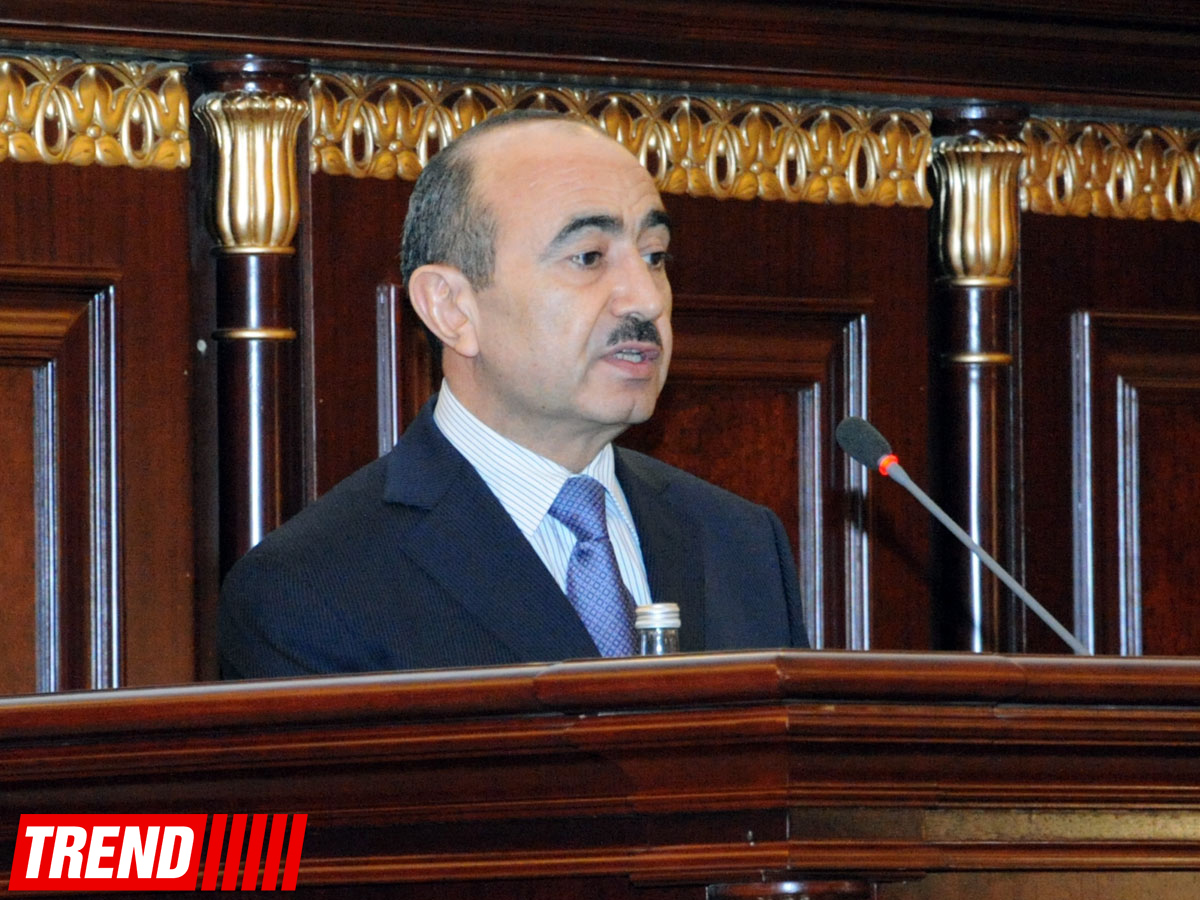Baku, Azerbaijan, Feb. 2
By Ilhame Isabalayeva - Trend:
Since ancient times, tribes and nations sought to explore the territories they inhabited, the people around them, and reflect the obtained information and knowledge in various forms, passed them on to each other, the head of the public and political issues department of Azerbaijani presidential administration, Ali Hasanov said Feb. 2.
He made the remarks at the presentation of The National Atlas of the Republic of Azerbaijan and the map titled 'South Caucasus: 1903', jointly organized by the State Committee for Land and Cartography and the Azerbaijan National Academy of Sciences.
Hasanov said among the forms of reflecting the obtained information and knowledge, cartographic images and materials are used, which are considered to be universal for people speaking different languages. He said specialist believe cartography emerged before writing.
"This area improves from year to year, and its importance for the state and society is increasing," he said. "Azerbaijani scientists and specialists have made great achievements in the progress of the national cartography culture."
"Back in the Soviet period, the physical, geographical, geological, political and administrative maps of the country were prepared. However, after Azerbaijan's gaining its independence, the scientific-practical and economic significance of this area increased."
Hasanov also noted that the use of maps and atlases by the Armenian invaders as a weapon against Azerbaijan shows the importance of this issue.
"Highly appreciating the importance and possibilities of influence of the cartography materials in the state's achieving its objectives, the National Leader Heydar Aliyev paid special attention to the development of this area," he said.
"International experience shows that the national atlases are prepared only by independent states. Today, about half of nearly 200 countries in the world don't have atlases. Western countries started this process back in the mid 70's-90's," he added.
Hasanov added that among the post-Soviet states, Azerbaijan is the fifth country to publish a national atlas, following Russia, Belarus, Ukraine and Kazakhstan.
"Of course, the preparation of the national atlas is the result of historical achievements presented to us by the state independence," Hasanov said. "This testifies to a high intellectual potential of Azerbaijani people. This is also the result of the progress recently achieved in the social-economic sphere."
He said that the atlas will be important for the society in terms of a number of aspects.
"First, it is enlightening for citizens, particularly, for the younger generation," Hasanov said. "So, one will be able to get accurate information and reliable knowledge about the history, culture, economy, natural resources of Azerbaijan and observe every corner of our country. On the other hand, young people and teenagers, getting the education, will be able to work with such manuals. This will contribute to expanding their world view and raising the intellectual level."
"The atlas will also make an important contribution to the protection of national interests of Azerbaijan, fair settlement of the Armenian-Azerbaijani Nagorno-Karabakh conflict," Hasanov said. "While preparing various fake maps for many years, Armenia and the Armenian diaspora use them against Azerbaijan and Azerbaijani people."
"Publishing of the National Atlas of Azerbaijan, its distribution in foreign countries and international organizations, as well as its delivery to the well-known libraries will create additional opportunities to expose Armenian lie related to the history and geography of the region, the essence of the current processes," Hasanov said.
Hasanov said that the maps are also very useful in terms of getting the information about refugees and internally displaced persons as a result of Armenia's aggression against Azerbaijan in 1988-1993, local conflicts, ethnic cleansing and occupied territories.
National Atlas to make important contribution to Karabakh conflict’s fair resolution
Since ancient times, tribes and nations sought to explore the territories they inhabited, the people around them, and reflect the obtained information and knowledge in various forms, passed them on to each other,






